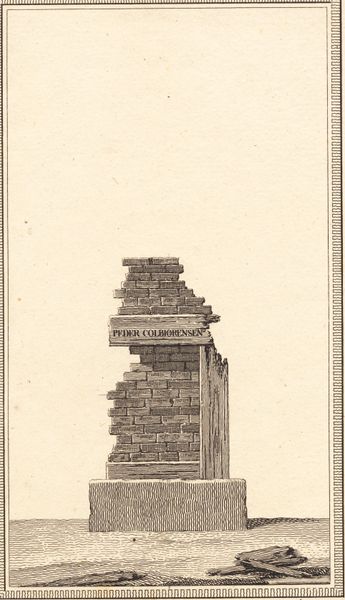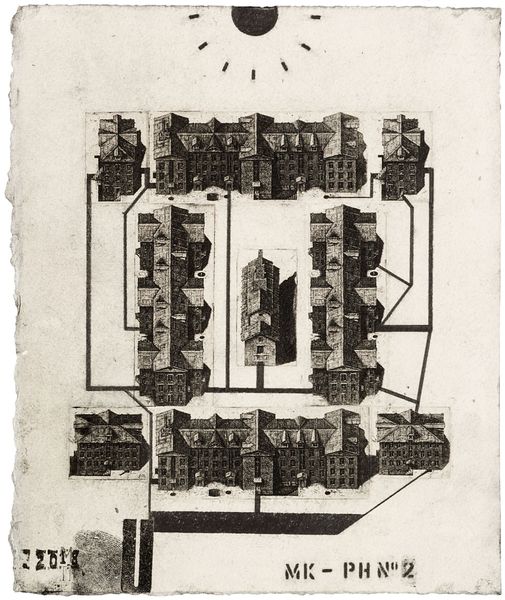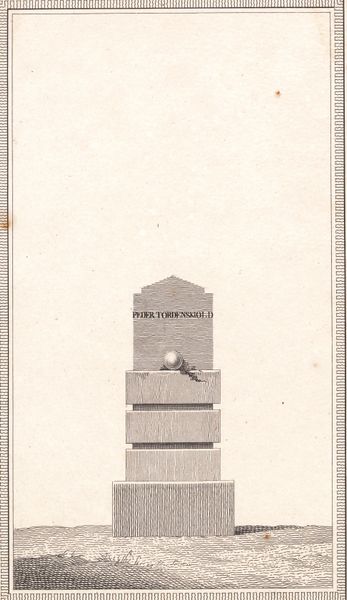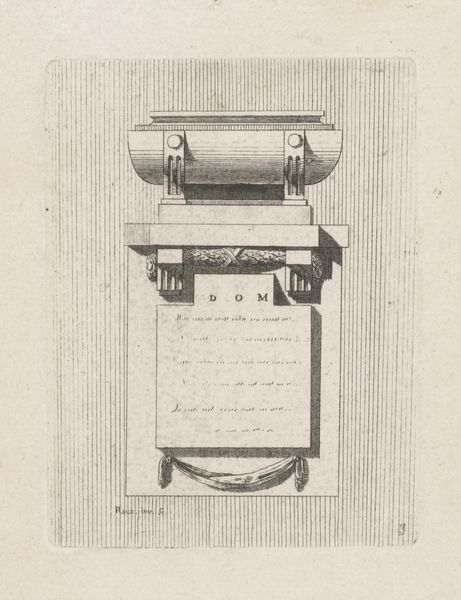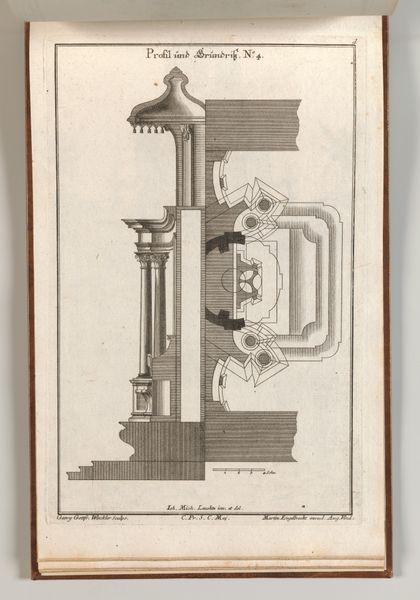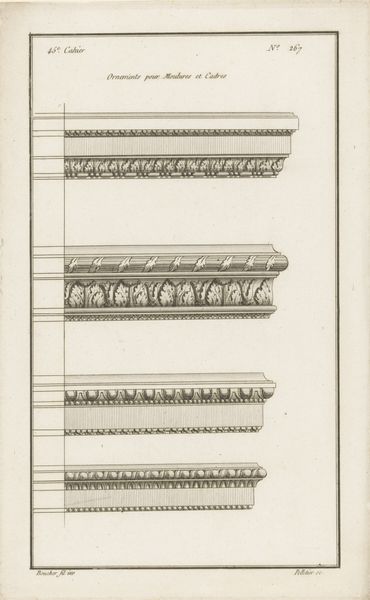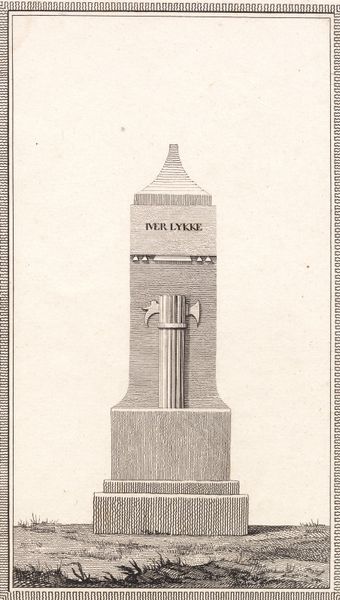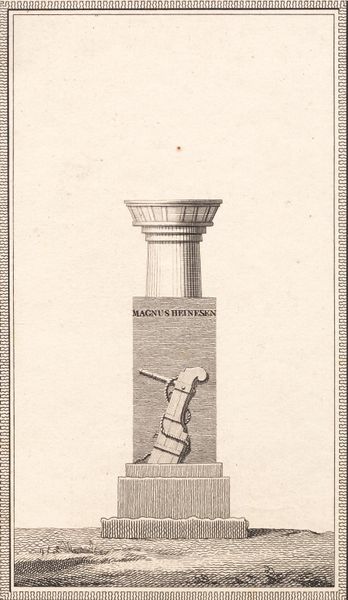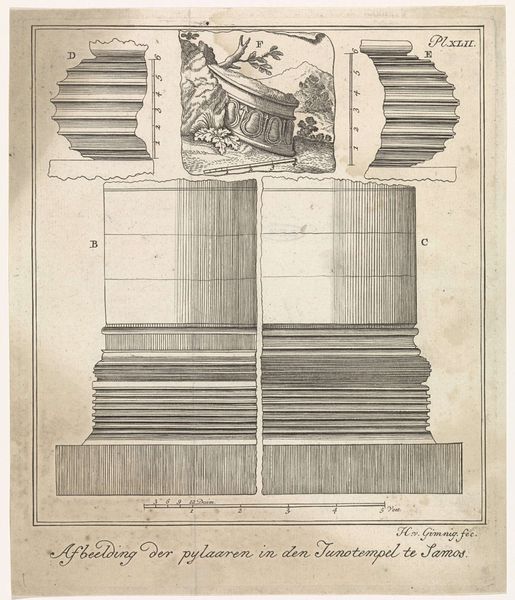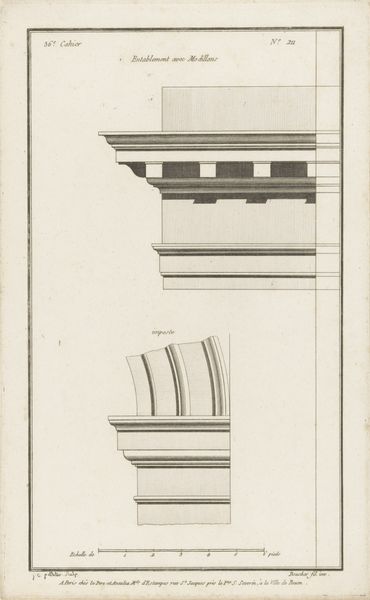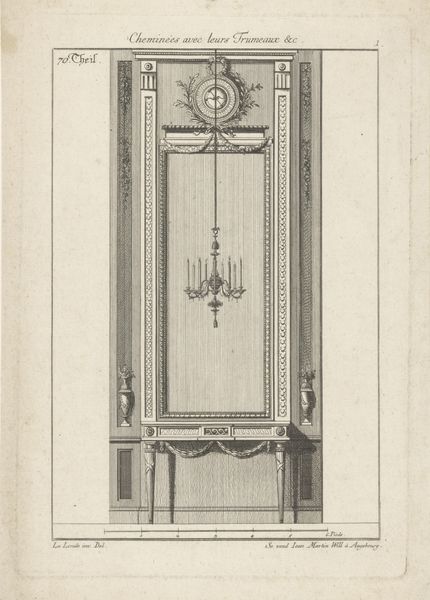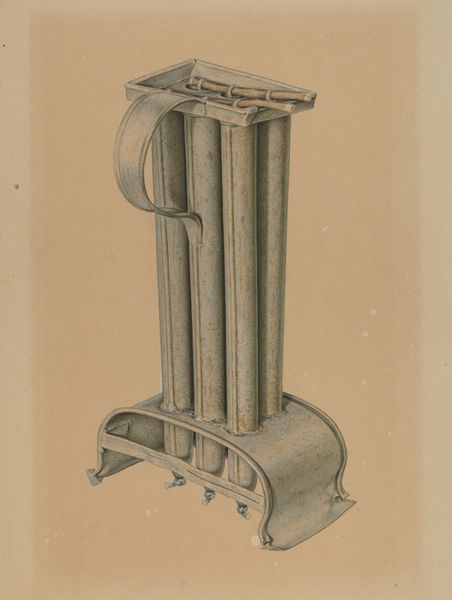
Dimensions: 180 mm (height) x 104 mm (width) (billedmaal)
J.F. Clemens created this print, "Iver Huitfeld," with etching, sometime between the late 18th and early 19th centuries. The structure of the image presents a study in contrasts, setting the intricate details of the carved wood against the plain background. This contrast invites a focus on the materiality and texture, and how it engages with a deeper, semiotic reading. Consider how Clemens arranges the elements. The deliberate composition with the broken remnants of the ship creates a symbolic framework. The 'Iver Huitfeld' inscription bisects the form, further fragmenting any cohesive narrative. Clemens isn't merely depicting a shipwreck; he is dissecting the ideas of memory and ruin. The ship, now reduced to fragments, challenges fixed meanings, prompting us to confront the themes of impermanence and transformation. The seemingly straightforward depiction of wreckage becomes, upon closer inspection, a sophisticated commentary on history. Its structure functions as a poignant reflection on the passage of time.
Comments
No comments
Be the first to comment and join the conversation on the ultimate creative platform.
